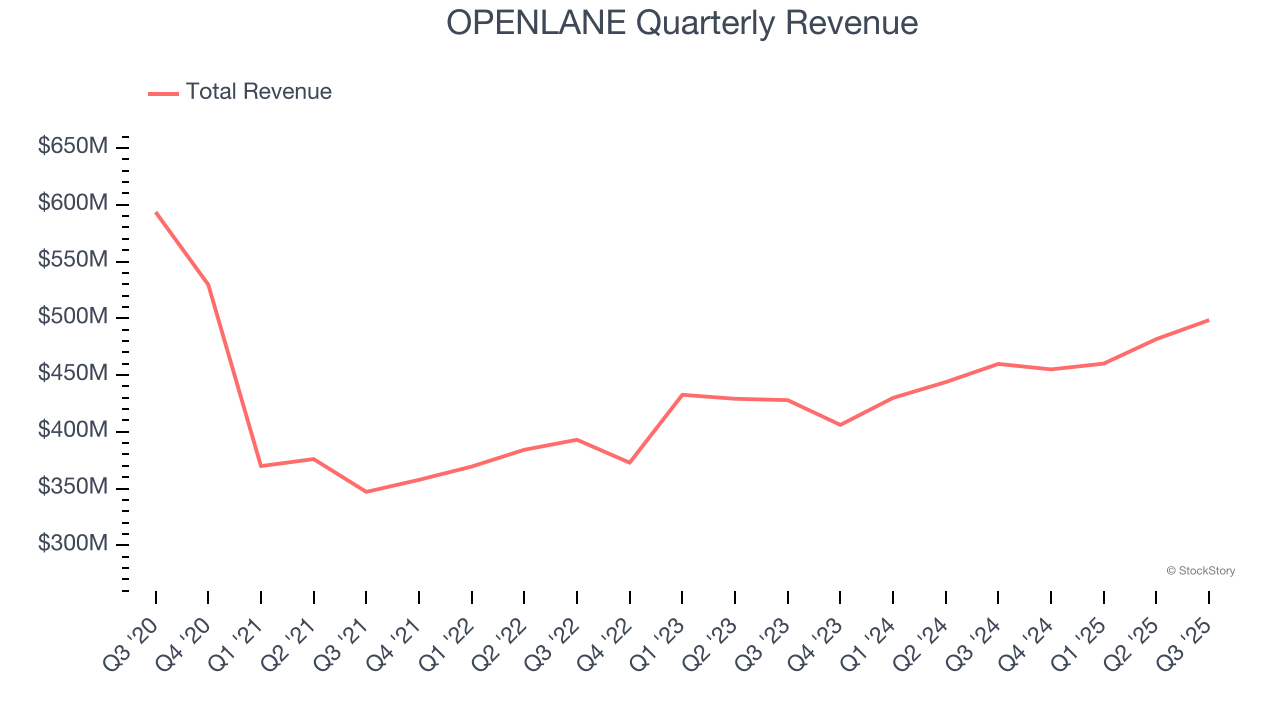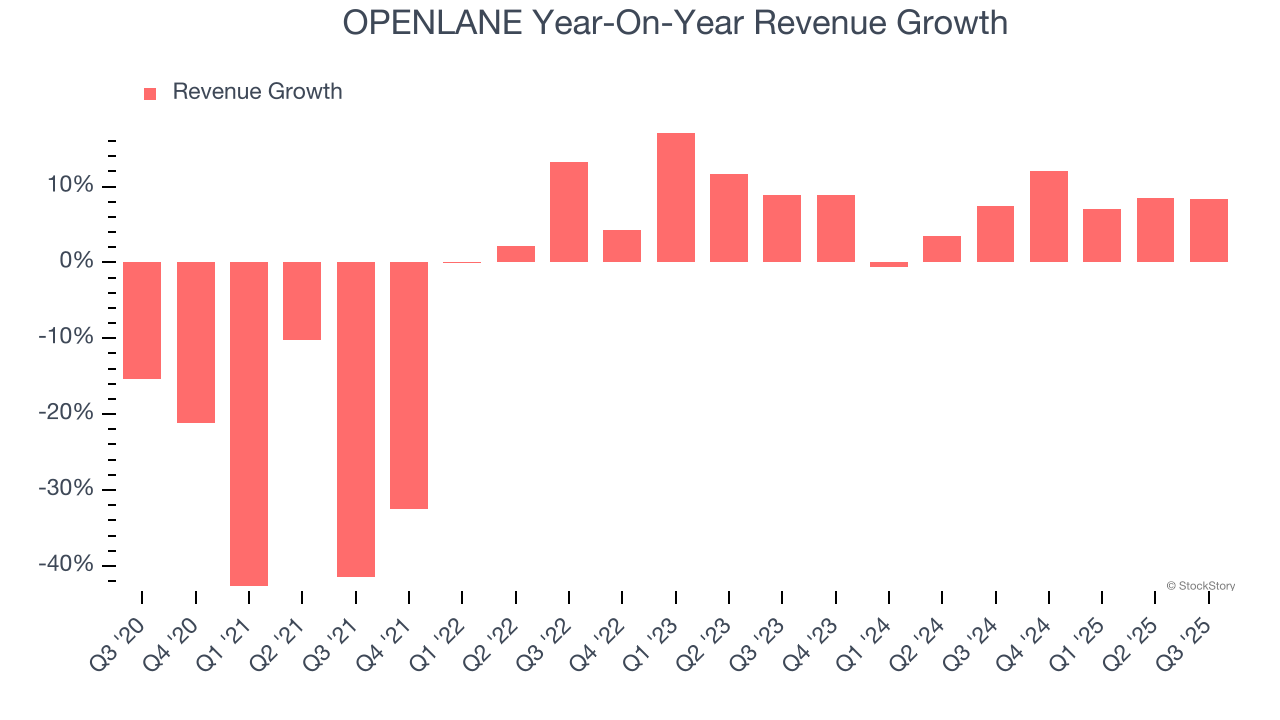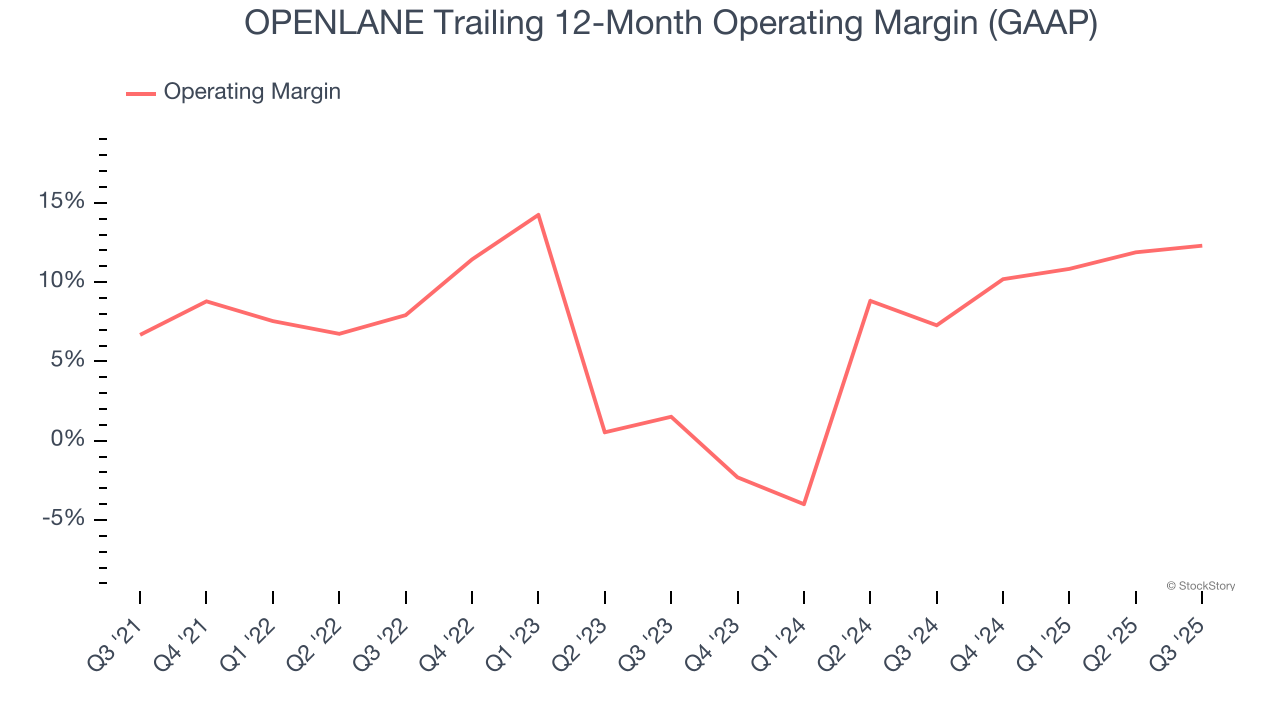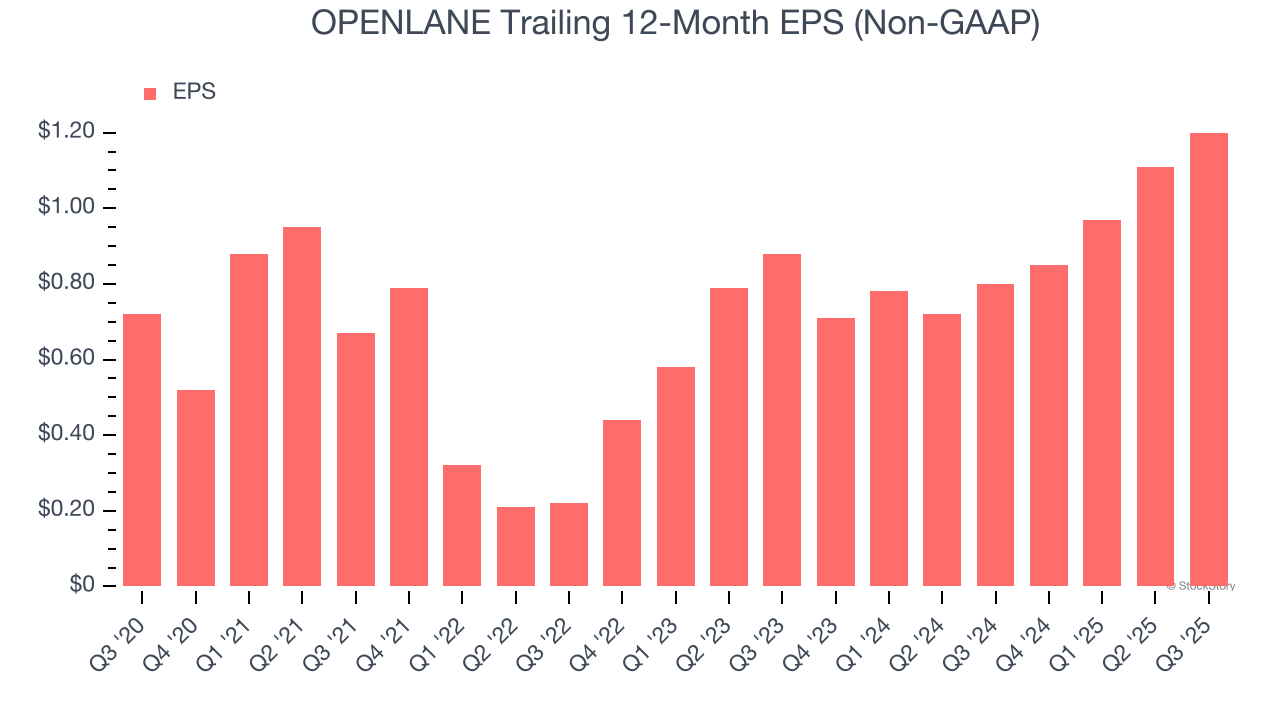
Digital vehicle marketplace OPENLANE (NYSE: KAR) reported Q3 CY2025 results exceeding the market’s revenue expectations, with sales up 8.4% year on year to $498.4 million. Its non-GAAP profit of $0.35 per share was 27.6% above analysts’ consensus estimates.
Is now the time to buy OPENLANE? Find out by accessing our full research report, it’s free for active Edge members.
OPENLANE (KAR) Q3 CY2025 Highlights:
- Revenue: $498.4 million vs analyst estimates of $470.5 million (8.4% year-on-year growth, 5.9% beat)
- Adjusted EPS: $0.35 vs analyst estimates of $0.27 (27.6% beat)
- Adjusted EBITDA: $87.1 million vs analyst estimates of $77.64 million (17.5% margin, 12.2% beat)
- Management raised its full-year Adjusted EPS guidance to $1.24 at the midpoint, a 8.3% increase
- EBITDA guidance for the full year is $330.5 million at the midpoint, above analyst estimates of $318.6 million
- Operating Margin: 11%, up from 9.2% in the same quarter last year
- Free Cash Flow Margin: 11.6%, down from 23.6% in the same quarter last year
- Market Capitalization: $2.82 billion
"OPENLANE's strategy — and the investments we've made to accelerate it — produced another strong quarter of organic growth and profitability, including 8% consolidated revenue growth and $87 million in Adjusted EBITDA," said Peter Kelly, CEO of OPENLANE.
Company Overview
Facilitating the sale of approximately 1.3 million used vehicles in 2023, OPENLANE (NYSE: KAR) operates digital marketplaces that connect sellers and buyers of used vehicles across North America and Europe, facilitating wholesale transactions.
Revenue Growth
A company’s long-term sales performance can indicate its overall quality. Any business can have short-term success, but a top-tier one grows for years.
With $1.90 billion in revenue over the past 12 months, OPENLANE is a mid-sized business services company, which sometimes brings disadvantages compared to larger competitors benefiting from better economies of scale.
As you can see below, OPENLANE’s demand was weak over the last five years. Its sales fell by 4% annually, a tough starting point for our analysis.

Long-term growth is the most important, but within business services, a half-decade historical view may miss new innovations or demand cycles. OPENLANE’s annualized revenue growth of 6.8% over the last two years is above its five-year trend, suggesting some bright spots. 
This quarter, OPENLANE reported year-on-year revenue growth of 8.4%, and its $498.4 million of revenue exceeded Wall Street’s estimates by 5.9%.
Looking ahead, sell-side analysts expect revenue to remain flat over the next 12 months, a deceleration versus the last two years. This projection doesn't excite us and indicates its products and services will see some demand headwinds.
Software is eating the world and there is virtually no industry left that has been untouched by it. That drives increasing demand for tools helping software developers do their jobs, whether it be monitoring critical cloud infrastructure, integrating audio and video functionality, or ensuring smooth content streaming. Click here to access a free report on our 3 favorite stocks to play this generational megatrend.
Operating Margin
OPENLANE was profitable over the last five years but held back by its large cost base. Its average operating margin of 7.3% was weak for a business services business.
On the plus side, OPENLANE’s operating margin rose by 5.6 percentage points over the last five years.

In Q3, OPENLANE generated an operating margin profit margin of 11%, up 1.8 percentage points year on year. This increase was a welcome development and shows it was more efficient.
Earnings Per Share
We track the long-term change in earnings per share (EPS) for the same reason as long-term revenue growth. Compared to revenue, however, EPS highlights whether a company’s growth is profitable.
OPENLANE’s EPS grew at a remarkable 10.8% compounded annual growth rate over the last five years, higher than its 4% annualized revenue declines. This tells us management adapted its cost structure in response to a challenging demand environment.

We can take a deeper look into OPENLANE’s earnings to better understand the drivers of its performance. As we mentioned earlier, OPENLANE’s operating margin expanded by 5.6 percentage points over the last five years. This was the most relevant factor (aside from the revenue impact) behind its higher earnings; interest expenses and taxes can also affect EPS but don’t tell us as much about a company’s fundamentals.
Like with revenue, we analyze EPS over a shorter period to see if we are missing a change in the business.
For OPENLANE, its two-year annual EPS growth of 16.8% was higher than its five-year trend. We love it when earnings growth accelerates, especially when it accelerates off an already high base.
In Q3, OPENLANE reported adjusted EPS of $0.35, up from $0.26 in the same quarter last year. This print easily cleared analysts’ estimates, and shareholders should be content with the results. Over the next 12 months, Wall Street expects OPENLANE’s full-year EPS of $1.20 to grow 3.1%.
Key Takeaways from OPENLANE’s Q3 Results
It was good to see OPENLANE beat analysts’ EPS expectations this quarter. We were also excited its revenue outperformed Wall Street’s estimates by a wide margin. Zooming out, we think this was a good print with some key areas of upside. The stock traded up 3.3% to $27.44 immediately after reporting.
OPENLANE put up rock-solid earnings, but one quarter doesn’t necessarily make the stock a buy. Let’s see if this is a good investment. What happened in the latest quarter matters, but not as much as longer-term business quality and valuation, when deciding whether to invest in this stock. We cover that in our actionable full research report which you can read here, it’s free for active Edge members.





